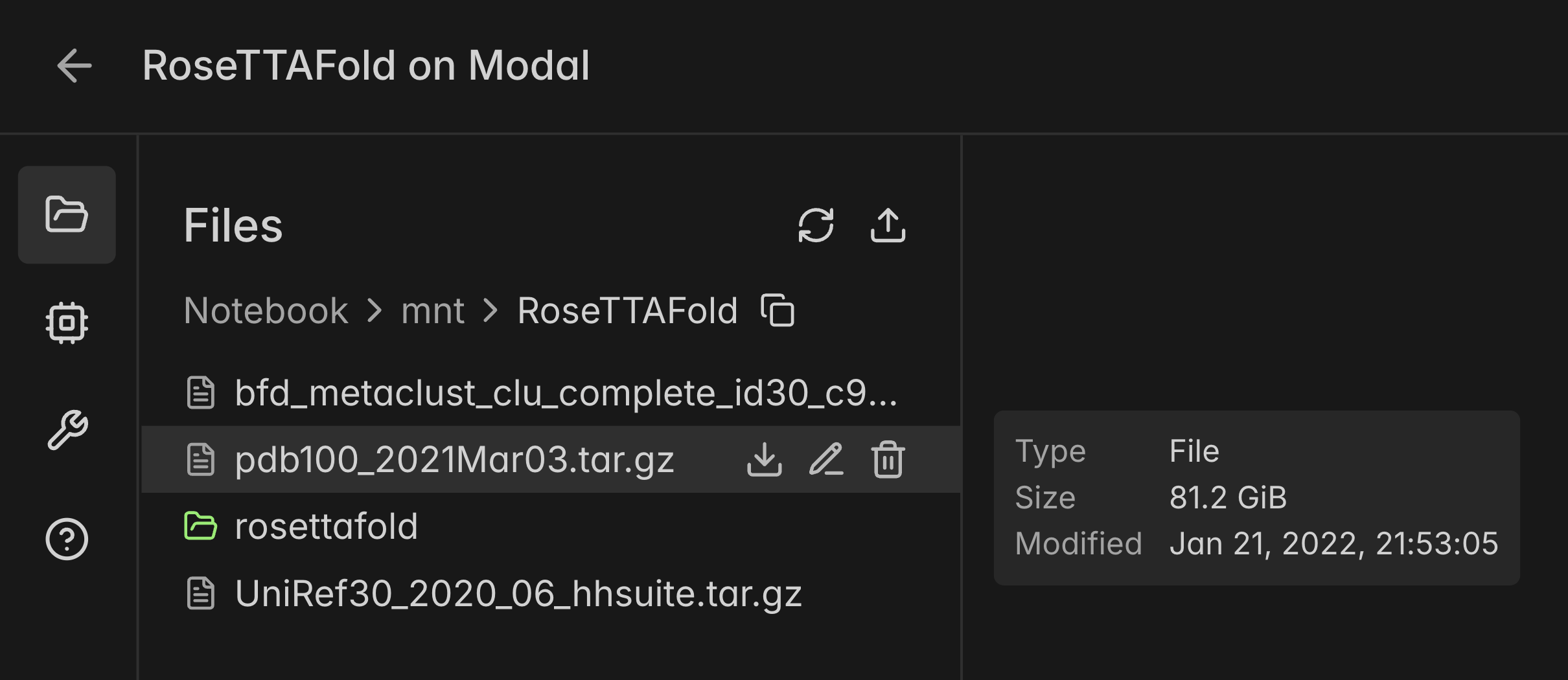Introducing Notebooks

Modal Notebooks is a collaborative environment for high-performance interactive computing. It lets you explore data, run code, and test ideas in a shared editor. This is powered by a GPU-enabled Python kernel that launches in seconds on Modal’s AI infrastructure.
In most cloud notebooks, kernels take minutes to start, environments aren’t preserved, idle sessions waste money, and you’re stuck on oversized GPU instances. Modal Notebooks removes these points of friction, so you can focus on cutting-edge work.
After a limited beta last month, Notebooks are now generally available to all Modal customers.
A better way to iterate on code and research
Today, tens of millions of end-users interact with applications built on Modal, from AI-generated music at Suno, to payments at Ramp, to consumer apps like Lovable and Substack.
Notebooks represent a new way to develop with Modal. They are designed for research and experimentation—not just writing code, but rapidly developing and refining ideas with your team. We believe this process is an important part of AI development and deserves equally good tooling as full-scale production workflows.
Features include:
- Fast time-to-first-cell. Cold-start to ready in less than 5 seconds, on arbitrary container images and hardware ranging up to 256 vCPUs and 8 H100/B200 GPUs. Switch GPU type just as easily.
- No zombie boxes. Kernels auto-idle and resume, so you only pay for when they’re running (configurable if you need control).
- One environment. Access the same Volumes (distributed storage), Secrets, and deployed Functions as the rest of your Modal Apps.
- True collaborative editing. Share live sessions with your team like in Google Docs—no more emailing
.ipynbfiles around or suddenly seeing your code & outputs disappear after a delayed refresh.
Modal has already redefined how teams run and scale jobs in production. Notebooks aim to bring our core developer experience principles to the exploratory side of AI work.
What you can do
Start instantly. Scale on demand.
Run from as little as 0.125 CPUs up to 8 Nvidia A100/H100/B200 GPUs.
With CPU, you can also burst above configured resource usage and only pay for active compute cycles.
Bring a custom image or work from a curated AI base image.
Modal’s content-addressed FUSE filesystem caches packages and loads them on demand, so kernels boot quickly even with large images.
Automatic idle-shutdown with fast resume (manual control is also available).
Work together in real time
- Multiple cursors, live presence, and seamless collaborative editing.
- Share within your workspace with fine-grained permissions.
- Use Jupyter Widgets to prototype and share interactive apps, which most other cloud notebook platforms don’t support.
Use your Modal stack, directly
Attach Volumes (persistent storage) and Secrets from the UI; browse files inline or upload them via drag-and-drop. Volumes can store terabytes of data with relaxed consistency and are multi-writer accessible from around the world.
Because Volumes and Secrets are shared across the workspace, you get reproducible results no matter who is running the notebook.

Call Modal Functions from any cell without extra authentication.
Reuse the same images and runtime primitives you already deploy in production.
Modern dev experience (LSP + AI)
- Pyright language server for completions, types, and diagnostics.
- AI completions when you’re exploring what to try next.
- Rich HTML outputs for plots/media in libraries like Altair, Seaborn, Plotly, and py3Dmol.
Industry usage of Notebooks
During our short beta in August, over 5,000 accounts adopted Notebooks in their daily workflows, running 200,000 code cells with instant startup and real-time collaboration. Early adopters included leading AI research and product startups—teams that need to move quickly from training to production.
Here’s what some of them had to say:
And while today marks general availability, we’re already thinking ahead. Upcoming features include:
- Memory snapshots to suspend and later resume execution, while preserving variables and files.
- One-click export of notebook code into Modal Apps.
- Scheduled runs and edit history for better reproducibility.
Try it today, with $30 free credits
For the Modal team, Notebooks have become our default surface for experiments and collaborative work. Our hope is that their speed, usability, and compute flexibility enable researchers to work together and bring simpler, better products into the world.
Check out some of our featured examples:
See the docs for more, or send us feedback on Slack.